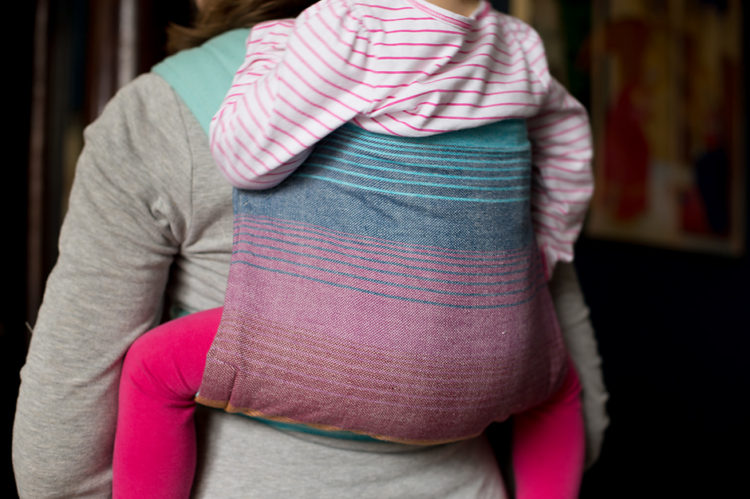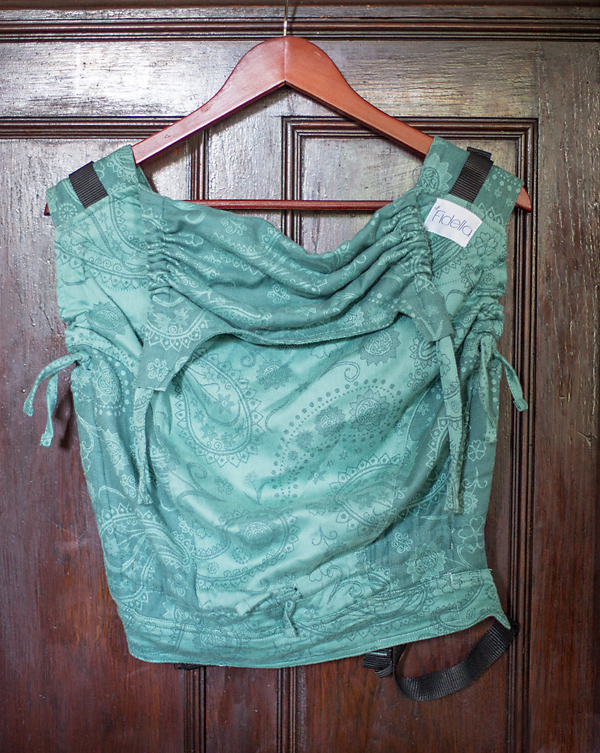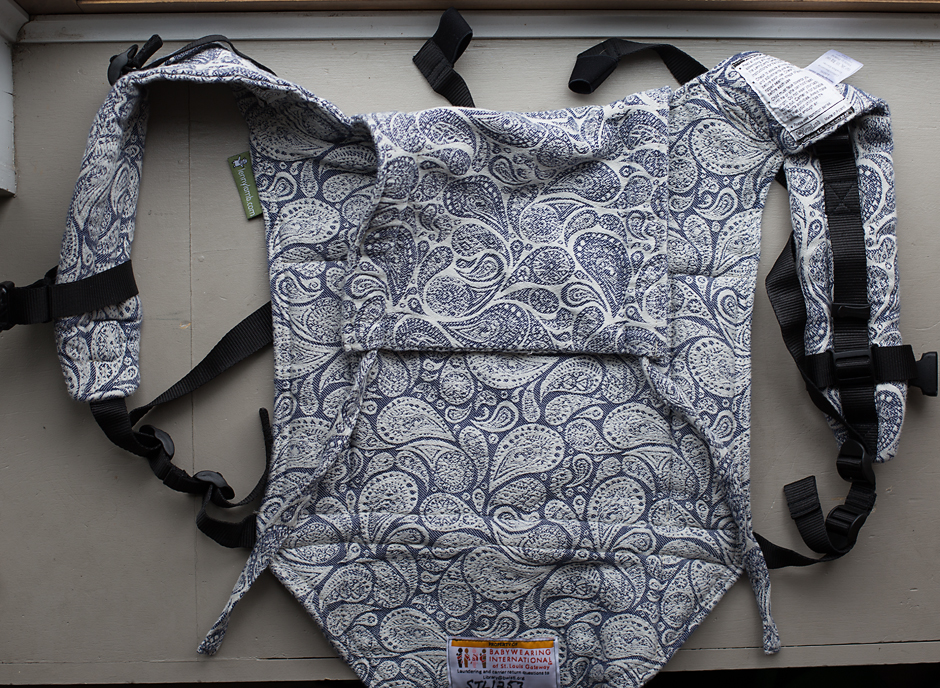Let’s be honest: the babywearing community can fall prey to being muddled in acronyms, unusual carry names, and brand names few people know *exactly* how to pronounce; I remember being slighly intimidated and much confused when I first started learning about it all.
In addition, babywearing has a rich history of varying traditions in cultures worldwide, and anyone using a language unknown to them can stumble on proper usage and pronunciation. The babywearing community as a whole has been taking steps towards honoring these cultures and the traditions that have migrated into current babywearing trends, and part of that process is making the effort to use the full and proper names of carriers (or as close as we can get when translating between languages!). This applies to many different types of carriers from different traditions, but since we are featuring our library onbuhimos today, I wanted to share a couple graphics made possible by members of the Asian Mom Support Network (for more resources, visit their Tumblr page). As someone who uses these carriers to hold my little ones close, I am constantly appreciative (and, honestly, a little in awe) of the cultures that made babywearing in this manner possible. But it’s important to show that appreciation, and one small way to do that is to learn the origins of the carriers and use the correct and traditional names for them.
While it might seem quicker and easier to abbreviate “onbuhimo” as “onbu”, the original language just doesn’t lend itself to that and we can respect that by referring to the carrier by its actual name. I hope you take a minute to read all the way through the information!
To review part of the grahpic above, an onbuhimo is a waistless carrier traditionally used in Japan for back carrying. A traditional onbuhimo is a roughly square panel of fabric with a ring on each lower corner and two long shoulder straps sewn to each upper corner; the straps come over the shoulders and are threaded through the rings before being tied off.
A recent adaptation of this carrier is a buckle onbuhimo that is secured with webbing and SSC (soft structured carrier) style buckles on the shoulder straps.
The lack of a waist belt in all onbuhimos has both positives and negatives. On the up side, it allows for a very high back carry; ideally, your rider can see over your shoulder, which is great for curious babies and toddlers! With no waist belt, an onbuhimo can be awesome for pregnant mamas, tandem carries, and fitting a wide range of body sizes with minimal adjustment. However it also means that all of baby’s weight is on your shoulders, which some caregivers find takes some getting used to (and some building up of those shoulder and upper back muscles!).
Over the last several months, we’ve added three onbuhimos to the BWI of STL library.
Featured Carrier: Fidella Onbuhimo, Persian Paisley Jungle print
Carrier Type: Buckle Onbuhimo
Suited For Ages: Older baby (sitting independently, Fidella says 80cm or about 31″ height minimum), through toddler and up!
Weight Limit: 30kg (about 65lbs!)
Carrier Positions: Back
Featured Carrier: Wallypop Onbuhimo, Iowa’s Rainbow
Carrier Type: Ring Onbuhimo
Suited For Ages: Older baby (sitting independently) through toddler and up!
Weight Limit: 8-35 lbs
Carrier Positions: Back or Front
Featured Carrier: Lenny Lamb Onbuhimo, Paisly Navy Blue & Cream
Carrier Type: Buckle Onbuhimo
Suited For Ages: Older baby (sitting independently) through toddler and up!
Weight Limit: 5-20kg (approx 11-44 lbs)
Wrap Details: Jacquard Weave, 100% Cotton
Carrier Positions: Back
The Lenny Lamb Onbuhimo comes in one standard size, but the panel width is adjustable.
You might love these carriers if…
- You have an older baby or toddler who loves to ride high and see everything.
- You want to tandem carry with the onbuhimo on back and another carrier on front.
- You don’t like the feeling of a waist band; maybe you’re pregnant and positioning the waist band is uncomfortable, or maybe you just don’t like waist bands.
- You share a carrier with other caregivers of varying heights and body types and would like something easy to adjust among you.
- You’re petite and have trouble finding a soft structured carrier with a waist band that adjusts small enough.
- You’re looking for a carrier for quick ups!
You might not love this carrier if…
- You’re looking for one carrier for front, hip, and back carries.
- You prefer carriers that transfer some of baby’s weight to your hips, torso, and/or back rather than carrying everything on your shoulders.
- You’re looking for a carrier starting from the newborn or young baby stage.
I’ll be honest: from what I have gathered from helping others, the onbuhimo might be one of those “love it or hate it” carriers. Those who love it say it is amazing for its ease of use, comfort for wearer and wearee, and size (so great to roll up small and stash in your bag). But there are plenty of people who just never find it comfortable.
This is why having a local carrier library is so fantastic! You might look at the pictures or try one on your own and think an onbuhimo is not for you, but try it on with an educator at a meeting who can help with fit tips and discover you’re actually in the “love it!” camp.
All of these carriers now rotate through our meetings in our learning and lending library and are available for checkout to BWI of STL members. As always, let us know here or in our Facebook group if you have any questions!








